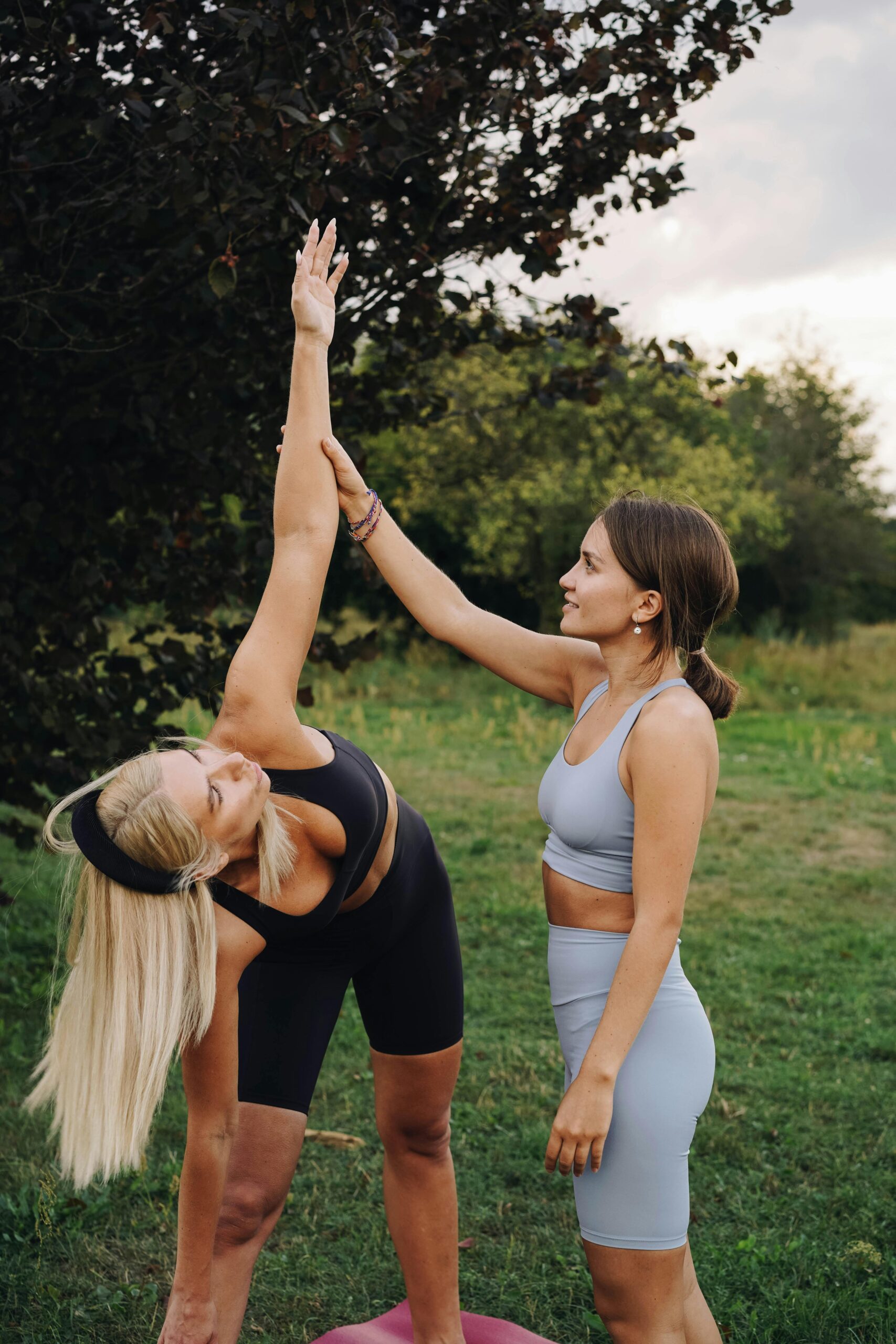Transform Your Life: Health, Fitness and Wellness Guide
Are you ready to start a journey towards a healthier lifestyle? This guide will show you the key to well-being. You’ll learn how to improve your physical, mental, and social health every day.
Discover how to make these changes a part of your life. You’ll find out how to feel more alive and fulfilled. It’s all about making lasting changes for a better life.

Key Takeaways
- Explore the interconnected components of health, fitness, and wellness
- Develop a personalized wellness strategy tailored to your unique needs
- Unlock the power of nutrition, exercise, and mindfulness practices
- Cultivate healthy habits and sustainable lifestyle changes
- Enhance your overall well-being through social connections and environmental wellness
Understanding the Pillars of Health, Fitness and Wellness
Reaching holistic health and wellness means seeing how different areas are connected. It’s key to know the three main pillars: physical, mental, and social wellness. These pillars support your journey to well-being.
Physical Well-being Components
Physical wellness includes nutrition, exercise, and body function. Eating well, staying active, and keeping your body in good shape are vital. They help keep your body and mind healthy.
By focusing on physical health, you boost energy, heart health, and immune system strength.
Mental Health Aspects
Mental wellness deals with emotions, thoughts, and mental health. It’s about managing stress, finding ways to cope, and being aware of yourself. It also means having positive thoughts.
Meditation, mindfulness, and therapy can help with mental health. They lead to peace, clarity, and strength.
Social Wellness Factors
Social wellness is about your relationships, community, and feeling connected. Building strong bonds, joining in social activities, and having a support network are important. They add to your overall well-being.
By focusing on social wellness, you feel more connected, emotionally fulfilled, and live a balanced life.
Remember, these three pillars are connected. Working on each one can lead to a better, happier life.

Creating Your Personalized Wellness Strategy
Making an individualized health plan is key to reaching your wellness goals. It helps you create a lasting personal fitness roadmap. By knowing what you need, like, and live for, you can make a plan that fits you perfectly.
Start by looking at your current health and what needs work. This might be your physical shape, mental health, or social life. Set SMART (Specific, Measurable, Achievable, Relevant, and Time-bound) goals that match your dream of being healthier and happier.
- Think about your good and bad habits to find what’s holding you back or what needs bettering.
- Work with doctors, fitness pros, or wellness coaches to get advice that’s just for you.
- Use methods that cover all aspects of wellness, like eating right, exercising, managing stress, and sleeping well.
Your personalized wellness strategy is unique and should grow with you. It should also include checking in regularly to make sure you’re on the right path to health and happiness.
| Key Components | Importance |
|---|---|
| Goal Setting | Clear, measurable goals give you direction and motivation. |
| Lifestyle Assessment | Knowing your habits helps you make better choices. |
| Holistic Approach | Working on physical, mental, and social health makes your plan balanced and lasting. |
| Personalization | A plan made just for you is more likely to work long-term. |
| Progress Tracking | Keeping an eye on your progress keeps you motivated and helps you adjust as needed. |
By focusing on your personalized wellness strategy, you start a journey to better health and happiness. This is your chance to take control of your wellness goals and create a personal fitness roadmap that matches your dreams.
“Your wellness plan is not a one-time event; it’s a living, evolving blueprint for a healthier, happier you.”
Nutrition Fundamentals for Optimal Health
Keeping a balanced diet is key for good health and wellness. Knowing about macronutrients and micronutrients is basic. Adding these to your daily meals boosts your health and helps your body work right.
Macro and Micronutrients Balance
Macronutrients like carbs, proteins, and fats give your body energy. It’s important to get the right mix of these. Micronutrients, like vitamins and minerals, help with things like fighting off sickness and keeping bones strong.
Meal Planning Essentials
Good meal planning is vital for healthy eating. Eating a variety of foods like fruits, veggies, whole grains, lean proteins, and healthy fats is important. This makes sure your body gets all the nutrients it needs to stay healthy.
Hydration Guidelines
- Drinking enough water is key for health and wellness.
- Try to drink at least eight 8-ounce glasses of water a day. You might need more if you’re active or live in a hot place.
- Eating foods with lots of water, like fruits and veggies, helps with staying hydrated.
| Nutrient | Function | Food Sources |
|---|---|---|
| Protein | Supports muscle growth and repair, immune function | Lean meats, poultry, fish, eggs, legumes, dairy products |
| Carbohydrates | Provides energy for the body and brain | Whole grains, fruits, vegetables, legumes |
| Healthy Fats | Supports heart health, brain function, and hormone production | Avocados, nuts, seeds, olive oil, fatty fish |
“Good nutrition is the foundation of good health. By nourishing your body with the right balance of macronutrients and micronutrients, you can unlock a world of benefits, from increased energy to better overall well-being.”
Exercise Routines for Every Fitness Level
Starting a healthier lifestyle begins with the right exercise routine. Whether you’re experienced or new to fitness, there’s a plan for you. It matches your needs and likes.
Regular exercise brings many benefits. It improves heart health, strengthens muscles, and boosts mood. Finding the right workout is key to making it a habit.
Variety is the Spice of Fitness
There’s no one workout for everyone. A wide range of exercises lets you find what fits your level, interests, and goals. Here are some options:
- Low-impact exercises like walking, yoga, and Pilates for beginners or those with joint concerns
- High-intensity interval training (HIIT) and strength training for those seeking an extra challenge
- Cardio workouts such as cycling, swimming, or dancing to elevate your heart rate
- Flexibility and mobility routines to enhance range of motion and prevent injury
Trying different workouts can help you find what keeps you motivated and consistent.
Fuel Your Fitness Journey
Nutrition and hydration are key to supporting your workouts and wellness. Eating the right mix of proteins, carbs, and fats boosts workout benefits and energy.
Drinking enough water is crucial for staying fit and focused during exercise.
The fitness journey is personal. By trying various workouts and focusing on well-being, you can unlock exercise’s full potential. Start your lifelong wellness adventure today.
Mental Wellness and Stress Management
Keeping your mental health in check is key to feeling good. Stress can hurt your mood, body, and how you connect with others. So, it’s vital to find ways to handle it. We’ll look at meditation, mindfulness, and other methods to boost your mood and emotional health.
Meditation Techniques
Meditation is great for easing stress and sharpening your mind. It helps you focus on now, calming your thoughts and bringing peace. Here are some meditation styles you might find helpful:
- Mindfulness meditation: Focus on your breath and live in the moment
- Guided visualization: Imagine a calm place to relax
- Body scan meditation: Release tension by focusing on your body parts
Mindfulness Practices
Mindfulness means being fully in the now, without judgment. It makes you more aware of your feelings and body, helping you deal with stress better. You can practice mindfulness in many ways, like:
- Mindful eating: Eat with full attention
- Mindful walking: Notice your body’s sensations
- Mindful journaling: Write about your day with kindness
Stress Reduction Strategies
There are more ways to reduce stress and improve your mental health. Besides meditation and mindfulness, consider:
| Strategy | Benefits |
|---|---|
| Exercise | Releases happy hormones, boosts mood, and lowers stress |
| Social Connection | Builds strong relationships and offers emotional support |
| Time Management | Helps you focus and feel less overwhelmed |
Adding these strategies to your daily routine can help you manage stress. It can also make you feel better emotionally and improve your life quality.
“The greatest weapon against stress is our ability to choose one thought over another.” – William James
Sleep Optimization and Recovery
Quality sleep is key to your health and fitness. Good sleep habits and recovery techniques boost your energy and help you reach your wellness goals. We’ll look at why rest is important and give tips for better sleep and recovery.
The Importance of Quality Sleep
Sleep is vital for a healthy life. It helps your body and mind recover. It repairs muscles, regulates hormones, and improves thinking, all important for health and fitness.
Not getting enough sleep can harm your energy, immune system, and increase health risks.
Establishing Healthy Sleep Habits
Improving your sleep hygiene is the first step to better rest. Here are tips for a consistent and restful sleep routine:
- Stick to a regular sleep schedule, even on weekends.
- Create a calming bedtime routine, such as taking a warm bath or practicing relaxation techniques.
- Ensure your bedroom is dark, cool, and free from distractions.
- Limit screen time and exposure to blue light before bed.
- Avoid consuming caffeine, nicotine, and heavy meals close to bedtime.
Maximizing Recovery Periods
Quality sleep and dedicated recovery periods boost your well-being. Here are some recovery techniques to consider:
- Active recovery, such as gentle stretching or low-intensity exercise, to promote blood flow and muscle regeneration.
- Passive recovery, like meditation or deep breathing exercises, to reduce stress and promote relaxation.
- Incorporating recovery tools, such as foam rollers or massage devices, to alleviate muscle soreness and tension.
- Ensuring proper hydration and nutrient intake to support your body’s natural recovery processes.
By focusing on sleep hygiene and recovery, you can improve your rest and enhance your health, fitness, and wellness.
| Sleep Hygiene Practices | Recovery Techniques |
|---|---|
| Maintain a consistent sleep schedule Create a relaxing bedtime routine Limit screen time before bed Ensure a comfortable sleep environment | Active recovery (gentle stretching, low-intensity exercise) Passive recovery (meditation, deep breathing) Utilize recovery tools (foam rollers, massage devices) Proper hydration and nutrient intake |
Remember, focusing on sleep hygiene and using effective recovery techniques is key. It helps maintain your rest importance and improves your health and fitness journey.
Building Sustainable Healthy Habits
Changing your life for the better is a journey, not a quick fix. The secret to success is building healthy habits that stick. This part will show you how to make lasting changes in your life.
Habit Formation Techniques
Creating new habits can be tough, but there are ways to make it easier. First, figure out what triggers your habits. Then, plan a new habit that’s simple and fun. Start small and make it harder as you get better.
- Leverage the power of habit stacking by linking new habits to existing ones.
- Use visual cues, reminders, and environmental design to support your habit building.
- Celebrate small wins and be patient with yourself as you develop new healthy routines.
Lifestyle Modifications
Changing your habits for good means making small changes every day. Try new foods, move more, and take care of yourself better. These small steps can make a big difference in your health.
- Explore plant-based or Mediterranean-style eating patterns to enhance your nutrition.
- Incorporate more movement into your daily life through activities you enjoy.
- Prioritize stress management techniques, such as meditation or journaling, to support your mental health.
Progress Tracking Methods
Keeping track of your progress is key to staying motivated. Use tools like fitness trackers and habit apps to see how you’re doing. Celebrate your wins and learn from your setbacks.
| Tracking Method | Metrics Measured | Benefits |
|---|---|---|
| Fitness Tracker | Steps, activity, sleep, heart rate | Provides comprehensive data on physical activity and recovery |
| Habit Tracker App | Daily habits, frequency, consistency | Helps visualize progress and maintain accountability |
| Wellness Journal | Mood, energy levels, reflections | Facilitates self-awareness and mindfulness |
Building lasting healthy habits takes time, kindness to yourself, and a flexible approach. By using these methods, you can make real, lasting changes that improve your life.
Social Connections and Wellness Community
Maintaining social support and building strong relationships is key to wellness. Studies show that good community health and relationship wellness boost mental, physical, and emotional health. We’ll look at how to make and keep supportive connections and join wellness communities for your health journey.
The Power of Social Support
Being part of a supportive network greatly affects your health and happiness. Research shows people with strong social ties face less depression, anxiety, and other mental health issues. Social support also helps with physical health by promoting healthy habits like exercise and eating right.
Building a Wellness Community
Being around people who value community health and relationship wellness keeps you motivated and accountable. Look into local fitness groups, wellness meetups, or online communities that match your interests. These groups offer a sense of belonging, support, and shared goals to help you reach your wellness goals.
Nurturing Meaningful Relationships
It’s also crucial to focus on social support in your personal life. Spend quality time with family and friends, do activities that bring you closer, and be fully present in your interactions. Research shows that strong, meaningful relationships can lead to a longer life, less stress, and better overall well-being.
By building a strong network of social support, getting involved in community health efforts, and nurturing relationship wellness, you can fully benefit from social connections for your overall health and well-being.
Environmental Wellness and Living Spaces
Creating a healthy, eco-friendly living environment is key for your well-being. By following sustainable living and designing wellness spaces, you can boost your health. Let’s look at how to make your living areas healthy and the benefits of natural living.
Creating Health-Promoting Environments
Your home and workspace greatly affect your eco-friendly wellness, healthy home, and sustainable living. Start by checking your spaces and find ways to improve. Here are some tips:
- Improve indoor air quality with air purifiers, plants, and good ventilation.
- Use non-toxic, natural materials for furniture and decor to avoid harmful chemicals.
- Get more natural light and outdoor access to help your mood and body clock.
- Design spaces ergonomically to keep your body comfortable and reduce strain.
Natural Living Principles
Living naturally can greatly improve your well-being. By living in sync with nature, you can feel more balanced. Here are some natural living tips:
- Eat organic, local foods to avoid pesticides and support green farming.
- Use natural materials like wood and stone in your home for a calming feel.
- Spending time outdoors, whether in parks or your backyard, connects you with nature.
- Try essential oils and herbal remedies for natural health support.
By making your spaces healthy and living naturally, you can fully enjoy your eco-friendly wellness, healthy home, and sustainable living. Investing in your living areas and living in harmony with nature can change your life for the better.
| Natural Living Principle | Benefits |
|---|---|
| Organic, locally sourced foods | Less pesticides, supports green farming |
| Natural materials in living spaces | Calming, connects you to nature |
| Spending time in nature | Better mental health, stress less, feel better physically |
| Natural wellness practices | Focuses on total health, less synthetic products |
Your living spaces are key to your eco-friendly wellness, healthy home, and sustainable living. By choosing wisely and living naturally, you can make spaces that support your health.
“The greatest weapon against stress is our ability to choose one thought over another.” – William James
Digital Wellness and Technology Balance
In today’s world, it’s key to have a good relationship with technology. Screens and social media can mess up our balance, causing tech-life imbalance, digital burnout, and bad screen time management. But, with smart strategies, you can get digital wellness and balance tech with your well-being.
Embrace a Digital Detox
Regular digital detoxes can change your life for the better. Try setting times to not use devices and do things without tech. This could be reading, walking, or spending time with family.
Optimize Your Screen Time
It’s important to manage your screen time well for digital health. Use apps to track and limit screen time. Make tech-free areas in your home, like the bedroom. Also, avoid phones during meals and family time.
| Metric | Recommended Limit | Your Current Usage |
|---|---|---|
| Daily Screen Time | 2 hours or less | – |
| Social Media Usage | 30 minutes or less | – |
| Bedtime Smartphone Usage | 0 minutes | – |
By watching and adjusting your tech-life balance, you can improve your tech relationship. This way, you can use your time and focus on more important things.
“The greatest gift we can give ourselves is the freedom from the tyranny of the urgent.” – Cal Newport, author of “Digital Minimalism”
Digital wellness is a journey. Start with small changes, be kind to yourself, and celebrate your wins. By balancing tech and your well-being, you can live a happier and healthier life.
Conclusion
As you finish this guide, think about the amazing wellness journey you’ve started. You’ve learned about health, fitness, and wellness. You now have the tools to change your life.
You’ve learned about nutrition, exercise, mental health, and building good habits. This sets you up for a life of well-being. This isn’t just a quick fix. It’s a long-term commitment to your health.
Use social connections, live in harmony with nature, and balance your digital life. Stay focused on your holistic well-being. You’ll enjoy a healthier, happier life. Start this journey with confidence and watch it transform you and those around you.
FAQ
What are the main pillars of health, fitness, and wellness?
The three main pillars are physical well-being, mental health, and social wellness. These work together to help you feel your best.
How can I develop a personalized wellness strategy?
Start by knowing what you need and like. Set goals that are achievable. Then, plan out steps to reach those goals.
What are the fundamentals of healthy nutrition?
Healthy eating means balancing proteins, carbs, fats, vitamins, and minerals. Good meal planning and staying hydrated are also key.
What types of exercise routines should I consider?
Choose from strength training, cardio, and flexibility workouts. Pick what you like and make exercise a regular part of your life.
How can I improve my mental wellness and manage stress?
Try meditation, mindfulness, and stress-reducing activities. Focus on emotional balance and a positive outlook for better mental health.
Why is sleep optimization and recovery important?
Good sleep and recovery keep you physically and mentally healthy. Good sleep habits and routines are essential for rest and recovery.
How can I build sustainable healthy habits?
Learn about changing behaviors, make lifestyle changes, and track your progress. Being consistent and patient helps build lasting habits.
What is the role of social connections in wellness?
Having supportive friends and joining wellness groups boosts your health. Social support helps with motivation and quality of life.
How can my living environment impact my wellness?
A healthy home and work environment improves your well-being. Focus on your surroundings for better physical and mental health.
How can I achieve a healthy balance with technology?
Manage screen time, take digital breaks, and use tech wisely. Finding a balance with technology is vital for your well-being.





